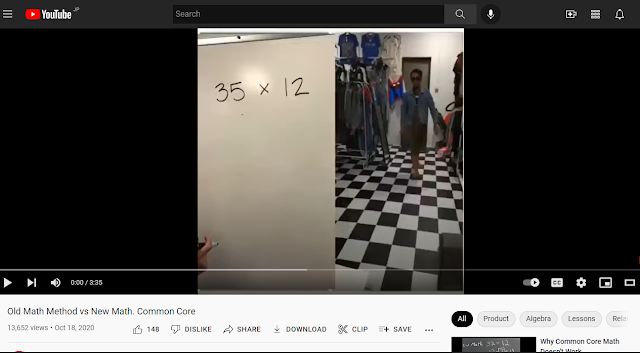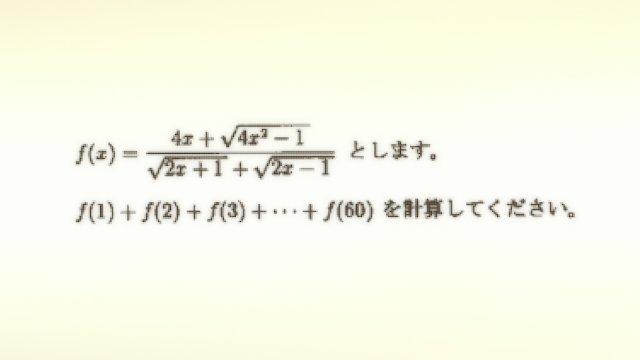The Categorification of High School
If you follow math education on any type of social media you'll probably be used to a myriad of heated arguments ranging from how multiplication should be taught to kids (see below), to what should be the aim of a math curriculum, to what should or should not be taught. One that I myself have been following with some interest is the one between people who would like to dethrone calculus from its current place as the pinnacle of HS math, and those who consider doing anything like that would inevitably weaken the math level of future generations.
 |
| If this image still from this video made you irrationaly angry, you know what I'm talking about. |
Not going into detail since it's not the point, but while I do think that everyone should learn the concepts of calculus to some degree, I also agree that it shouldn't be the "end all be all" of HS mathematics as it has been for a while; there are other branches that could be focused on instead. That being said, which one(s)? Or what can a single person/teacher do other than get into Twitter fights with randos?
I thought of a slightly different approach to both of this questions: Rather than thinking of big changes in the direction of a curriculum (something I have no control over), I thought it would be best to focus on how it's "packaged", in some sense. Perhaps because of my math background and the confidence I've gained after a few years of teaching, I've been toying with the idea of using "structure" as the main unifying concept for the mixed salad of topics in secondary math education... and when you talk about structure and unification I could not help but think of category theory. Fasten your seatbealt, dear reader, we're in for a ride.
~~~~~~~~~~~~~~~~~~~~~~~~~~~~~~~~~~~~~~~~~~~~~~~~~~~
It's also not the point of the post, but I figured I should give a short and sweet introduction to category theory for those not familiar with it. To put it simply, category theory looks at how mathematical objects (for example: sets, rings, topological spaces, etc...) in a certain context interact with each other through morphisms (which correspond to functions for sets, ring homomorphims for rings, continuous functions for topological spaces, etc... ). This general view allows us to see similarities in the structure of these different categories of objects, ways to jump from one to the other, and to use the existing tools from one category to analyze objects of a different one, among other things.
As Dr.Bradley puts it in this blogpost, category theory gives us a vantage point from where to look at the whole math landscape. Speaking of that post, she says that category theory shouldn't be a country in the accompanying image, but somewhere high to get a bird's-eye-view. As luck would have it, someone on twitter replied to a comment I made a while ago with an updated version of the map that Dr.Bradley would probably enjoy:
 |
| Now that's what I call a good view! |
Given how beautifully simple the ideas behind category theory are and its ability to tie all these different areas of math together: Would it be benefitial and compatible with a given fixed curriculum? And perhaps even before asking those questions: Would it be possible to introduce some such concepts to much younger students? After all, even if you major in math in university there's a good chance you won't hear about it as it's not part of the standard undergrad curriculum at most institutions...
 |
| The day the commutative diagrams attacked. |
It goes without saying that I took it pretty slow at first and introduced the main ideas without any specialized vocabulary or concepts to test the waters in some sense. I initially focused more on pointing out "coincidences" in behaviour among the topics, notation, and vocabulary that they were already familiar with like the ones I mentioned above. Indeed, they quickly brought up a few examples that they themselves had noticed way before. This gave me enough confidence to push a little farther and farther until... well, that's what this family of posts will be about!
I originally intended to write a single post about this much earlier, pretty much at the start of the whole thing, but I rarely summon enough willpower to update this blog more than once a year, so I had left it in the backburner for a while. It's been a few months since then and by now a lot of things have happened concerning this little experiment, many of which deserve their own space to talk about them in slightly more detail than would be available in a single post without making it massive. And so, I decided to make it into a series (like I usually try to do...) in the hopes of updating it relatively frequently. This post will serve as context for all of them and as a hub to link the different sections together:
[Placeholder]
Anyways, look forward to at least one more posts on this topic (it's being written at the same time as this one so for sure it'll be up!). After that I can't promise much since my willpower will have run out or it all crashed and burned... wish me my students luck!


Comments
Post a Comment